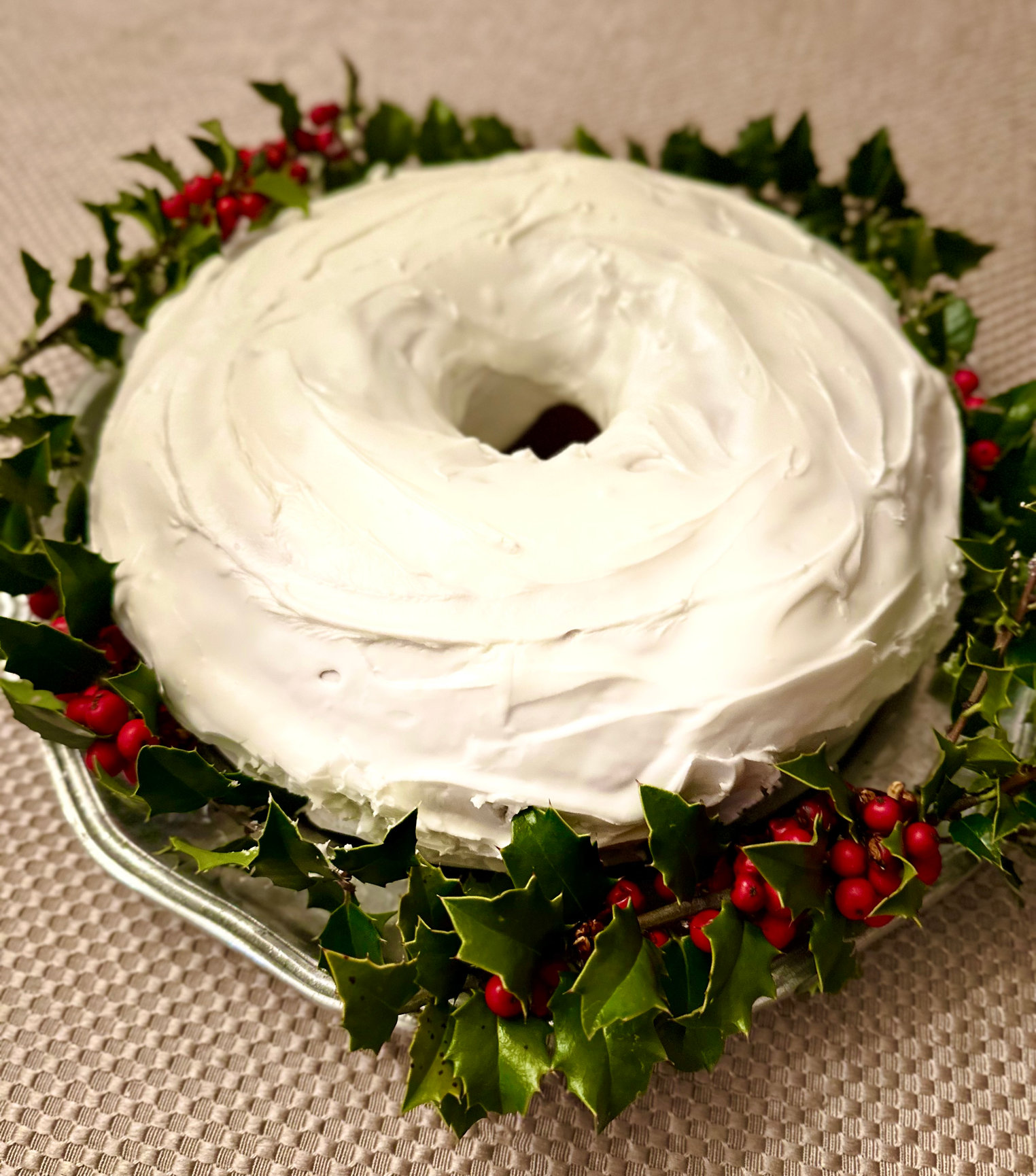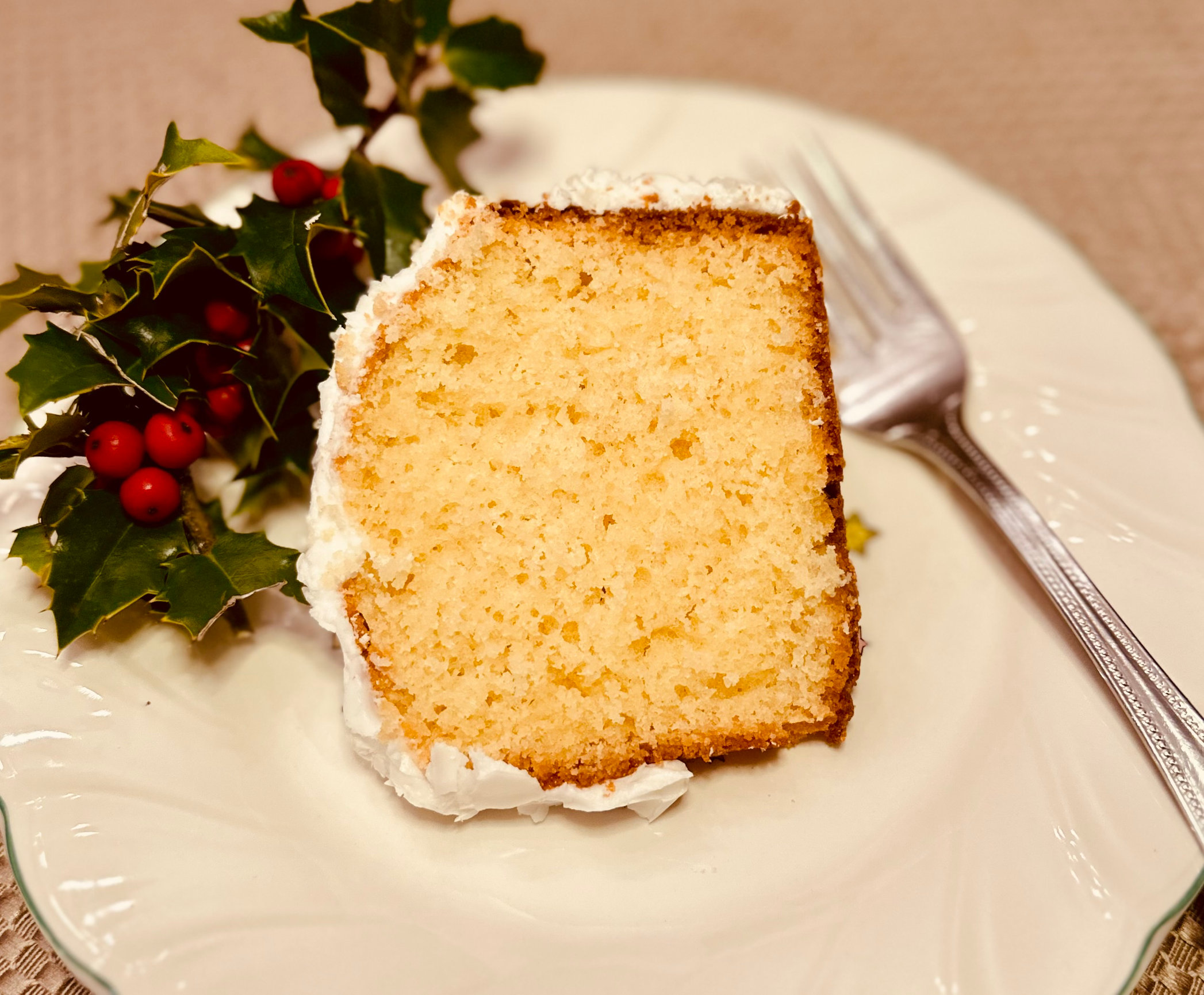Twelfth Night Cake
Friday, January 05, 2024 | By: Becky Diamond
Twelfth Night has traditionally been celebrated by Christians on January 6, or the Feast of Epiphany, representing the day when the Three Kings arrived in Bethlehem to give their gifts to baby Jesus. Gilded Age society often marked the occasion with a Twelfth Night party where they feasted on rich food and children were given three gifts (representing one from each wise man). Party décor was similar to other yuletide decorations, including evergreen garlands and wreaths of holly tied with colorful ribbons, accented by the addition of some colorful potted plants and fresh cut flowers. Chandeliers were often interwoven with festive vines and flowers.
But the highlight of these Twelfth Night celebrations was the elaborately decorated Twelfth Night Cake. This was a large dense cake that was either similar to a pound cake or flavored with fruit, nuts, and spices like a fruitcake. A pea, a bean, and a clove were placed inside the cake. When it was served, whoever got the piece with the pea became the queen of the evening, whoever got the bean was the king, and the person receiving the slice with the clove was the jester. These three guests were allowed to preside over the evening activities, with the rest of the guests filling the “roles” of maids of honor and ministers of state. This often involved a coronation ceremony where the king and queen were crowned and then led the first dance and/or a series of toasts with cups of punch. Sometimes festivities began early in the day and continued through midnight. Party activities included fun events like a magic or puppet show and parlor games such as a bean-bag toss and charades. Other times the party took the form of a costume ball, with dancing followed by supper.
At the end of the evening, all the Christmas greens were taken down and burned on the Yule log to prevent bad fortune in the coming year. The king or queen would have the honor of placing the last wreath on the fire, making the request that everyone banish prior grudges and have a year filled with peace and harmony. A “loving cup” of grape juice, fruit punch, or mulled cider was passed around for all to take a sip and make a wish for the new year.
During the Gilded Age, it was customary to bake Twelfth Night Cake in a ring-shaped mold. Once it was iced, red and white candles were often placed on the top to form a five-pointed star shape and sprigs of fresh holly were added as a garnish, creating a wreath-like appearance. Use whatever shape and decorations suit your fancy! The most fun is seeing who gets the pieces with the pea, bean and clove. Enjoy!
Twelfth Night Cake
SERVES 12–16
- 3 1/2 cups cake flour
- 3 teaspoons baking powder
- 1/2 teaspoon salt
- 2 sticks (1 cup) unsalted butter, softened
- 2 cups sugar
- 5 large egg yolks, separated individually (reserve egg whites)
- 1/2 cup orange juice
- 1/2 cup milk
- 3 egg whites
- 1 dried bean, 1 dried black-eye pea, and 1 clove
- Red and white candles and fresh holly, for garnish (optional)
Preheat oven to 350°F. Grease and flour a 10-inch tube pan and set aside. Sift flour, baking powder, and salt in a large bowl.
In a separate bowl, cream butter using an electric mixer on medium-high speed until smooth. Gradually add the sugar, beating until light and fluffy, scraping down the sides of the bowl if necessary. Add the egg yolks one at a time, beating after each addition. Turn mixer speed to low and add flour alternately with orange juice and milk.
In a separate glass or stainless steel bowl, beat egg whites on low speed until foamy, about 3–4 minutes, then increase speed to medium and continue to beat another 5–8 minutes or until stiff. Fold into the batter (best done by hand).
Transfer the batter to the tube pan and bake for 1 hour or until a toothpick inserted into the center comes out clean. Cool for 10 minutes on a wire rack, then place another rack on top and carefully flip the cake. It should slide out of the pan onto the rack.
Remove the bottom of the tube pan. Insert the bean, pea, and clove into different parts of the cake. Allow it to cool completely before frosting with royal icing.
ROYAL ICING
- 2 egg whites
- 2 teaspoons lemon juice
- 3 1/4 cups confectioners’ sugar, sifted
Whisk egg whites on low speed until foamy, about 4–5 minutes, then stir in lemon juice. Add confectioners’ sugar a little at a time, increasing speed to medium-high until icing is smooth and glossy.








Leave a comment
0 Comments